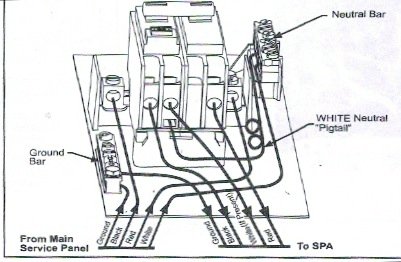I was told to never connect the ground and neutral anywhere outside the main panel at the house. That main panel is the only place the neutral and ground buss should be tied together. Yes, they are functionally tied together everywhere since they are at the main panel, but there is the need to keep them separate after the main panel for safety sake. You may not remember or someone unknowing may assume everything is up to code when it is not.
I recently added a new sub-panel to my garage for a welder. I ran a 4-wire cable from the house to the sub-panel, but only used the 2 hots and ground to the welder outlet.
From the sub-panel, I ran 4 wires to the Spa Panel with GFCI for the kettle heater. The GFCI breaker requires a neutral connection to work properly - but after that breaker, you don't need to use neutral. I ran only 2 hots and the ground to the kettle element.
Here's a link to the info I used to reference wiring diagrams:
https://www.spadepot.com/spacyclopedia/wiring-hot-tub-spa.htm
The thread to my questions here at HBT:
https://www.homebrewtalk.com/forum/...-answers-wiring-heat-element-question.641291/
Here is the proper wiring diagram for the L6-30 plug:
http://radiantmoons.me/nema-l1430-w...-120v-20-amp-twist-lock-throughout-30-diagram






